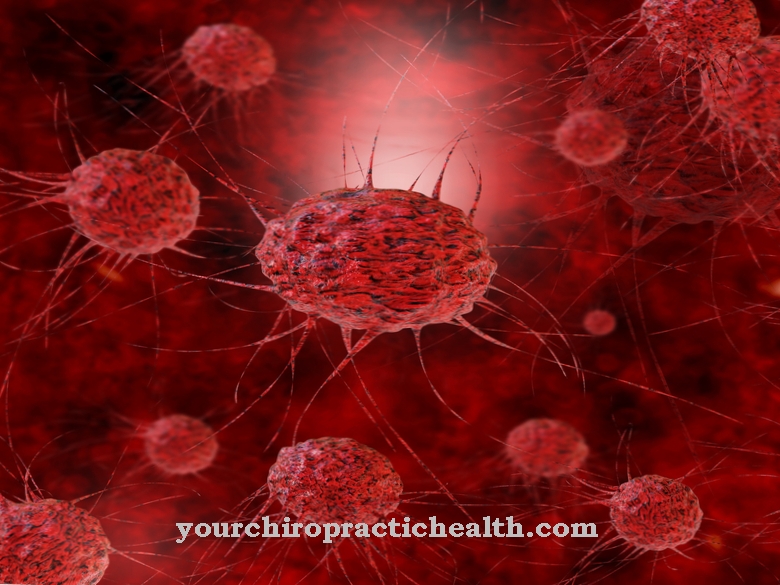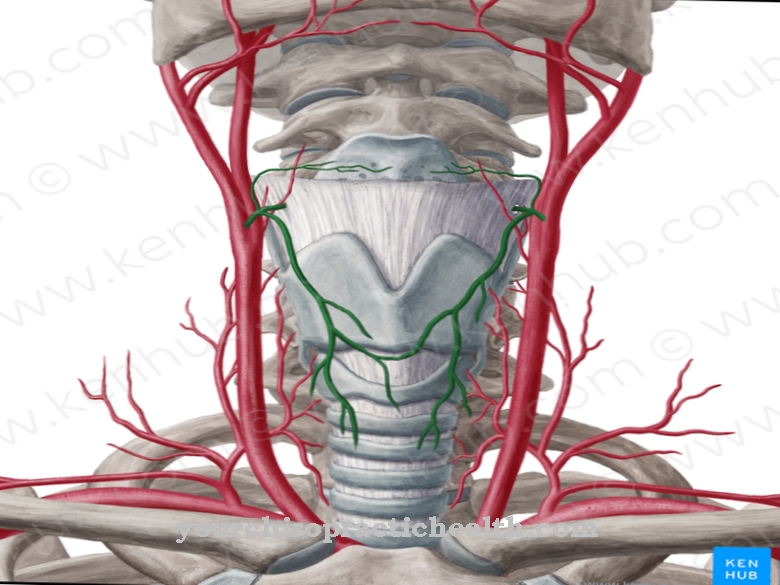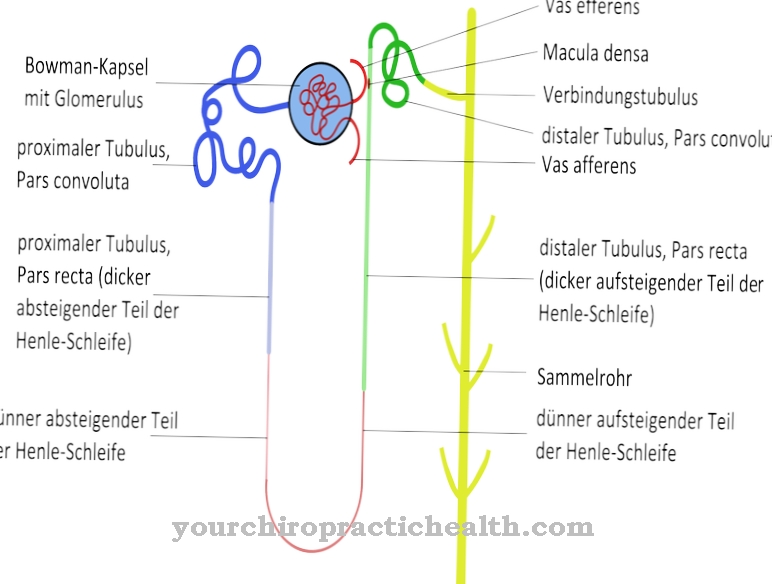Of the Parahippocampal gyrus is a turn of the cerebral cortex. It belongs to the limbic system, contributes to memory processes and plays an important role in visual recognition.
What is the parahippocampal gyrus?
The parahippocampal gyrus is in close proximity to the hippocampus.
This is part of the archicortex, which in turn belongs to the cerebrum. Phylogenetically, the archicortex is younger than the neocortex, but older than the paleocortex. Medicine assigns the hippocampus to the limbic system, which also includes the parahippocampal gyrus. Within this system, the hippocampus is primarily involved in memory processes.
From an anatomical point of view, the parahippocampal gyrus is not completely separated from the surrounding brain mass. It merges into the uncus on one side and borders on the medial occipitotemporal gyrus (gyrus lingualis or infracalcarinus gyrus) on the other side. Below the parahippocampal gyrus and the medial occipitotemporal gyrus lies the lateral occipitotemporal gyrus (subcuneus).
Anatomy & structure
In the anterior part of the parahippocampal gyrus is part of the entorhinal cortex.
This is also known as the association cortex and consists of three sections: the frontal, parietal, and limbic association cortex. The latter is the portion that lies in the parahippocampal gyrus. It corresponds to Brodmann areas 28 and 34. The limbic association cortex can be further divided into a ventral and a dorsal area.
The posterior part of the parahippocampal gyrus belongs to the parahippocampal cortex, to which the anatomy also assigns areas of the lateral occipitotemporal gyrus. The “parahippocampal place area”, which is relevant for visual recognition, is also located within the cerebral convolutions.
The cortex of the parahippocampal gyrus is composed of six layers of cells. Overall, the tissue is a gray matter, as it mainly consists of nerve cell bodies. The actual information processing takes place in the neural networks. In contrast to gray matter, the white matter of the brain consists predominantly of myelinated nerve fibers. Nerve fibers are the thread-like extensions of the neurons and transport the electrical signals of the nerve cells.
Function & tasks
The parahippocampal gyrus forms part of the limbic system, which is composed of various anatomical structures. These are linked and are dedicated to tasks such as emotions, memory, learning and some vegetative control processes. However, these functions are not limited to the limbic system. For example, there is no central memory in the brain for memory. Instead, memory processes such as imprinting and recalling memories are distributed across different areas of the brain.
The default mode network plays a central role in memory processes. It represents a functional network of different brain structures. According to research findings, the parahippocampal gyrus could play a key role within the default mode network by mediating between the network and the medial temporal lobe (Ward et al., 2014). The parahippocampal gyrus also creates associations. The so-called association cortex is the entorhinal cortex, which u. a. plays a central role in Alzheimer's dementia. In addition, the parahippocampal gyrus may be involved in associations in social situations.
Furthermore, the parahippocampal gyrus is involved in visual recognition, with the “parahippocampal place area” playing an important role. The activity of this area is related to the observation of landscapes and spaces. The parahippocampal gyrus is not responsible for the primary sensory perception (seeing in the true sense), but has a higher cognitive function. Recognition only comes into play after sensory perception and relates to the identification or assignment of what has been seen.
You can find your medication here
➔ Medicines against memory disorders and forgetfulnessDiseases
Decreased activity in the parahippocampal gyrus and hippocampus is associated with schizophrenia. Schizophrenia is a mental disorder characterized by delusions and hallucinations.
Other possible symptoms include association breakdown, ego disturbances, noticeable language (e.g. neologisms), emotional excitement, and thought disorder. These signs of illness represent so-called positive symptoms. Their counterparts are negative symptoms such as emotional flattening, reduced affect, social withdrawal, cognitive and linguistic diminution, apathy, as well as reduced activity and initiative. Since schizophrenia is a very complex disorder, it can manifest itself differently from person to person. For the treatment of schizophrenia, in addition to drug therapy, accompanying psychotherapy, psychoeducation or special training can also be considered.
The “parahippocampal place area”, which is located within the parahippocampal gyrus, is important for the visual recognition of landscapes and spaces. Lesions in this area therefore typically lead to problems in recognizing these views. The person concerned is still able to see and identify individual objects, but they can no longer assign the overall picture. Such lesions can result, for example, from a tumor, bleeding, inflammation or a stroke.
Anomalies in the parahippocampal gyrus are also possible in connection with temporal lobe epilepsy. The disease can be associated with hippocampal sclerosis, which is also known as mesial temporal sclerosis and manifests itself as a failure of nerve cells in the affected area. Medicine distinguishes four different types of hippocampal sclerosis, of which type 1B is the most common and is considered severe hippocampal sclerosis. Doctors often treat temporal lobe epilepsy with medication, but other treatments, such as brain surgery, may be used in some cases.



























